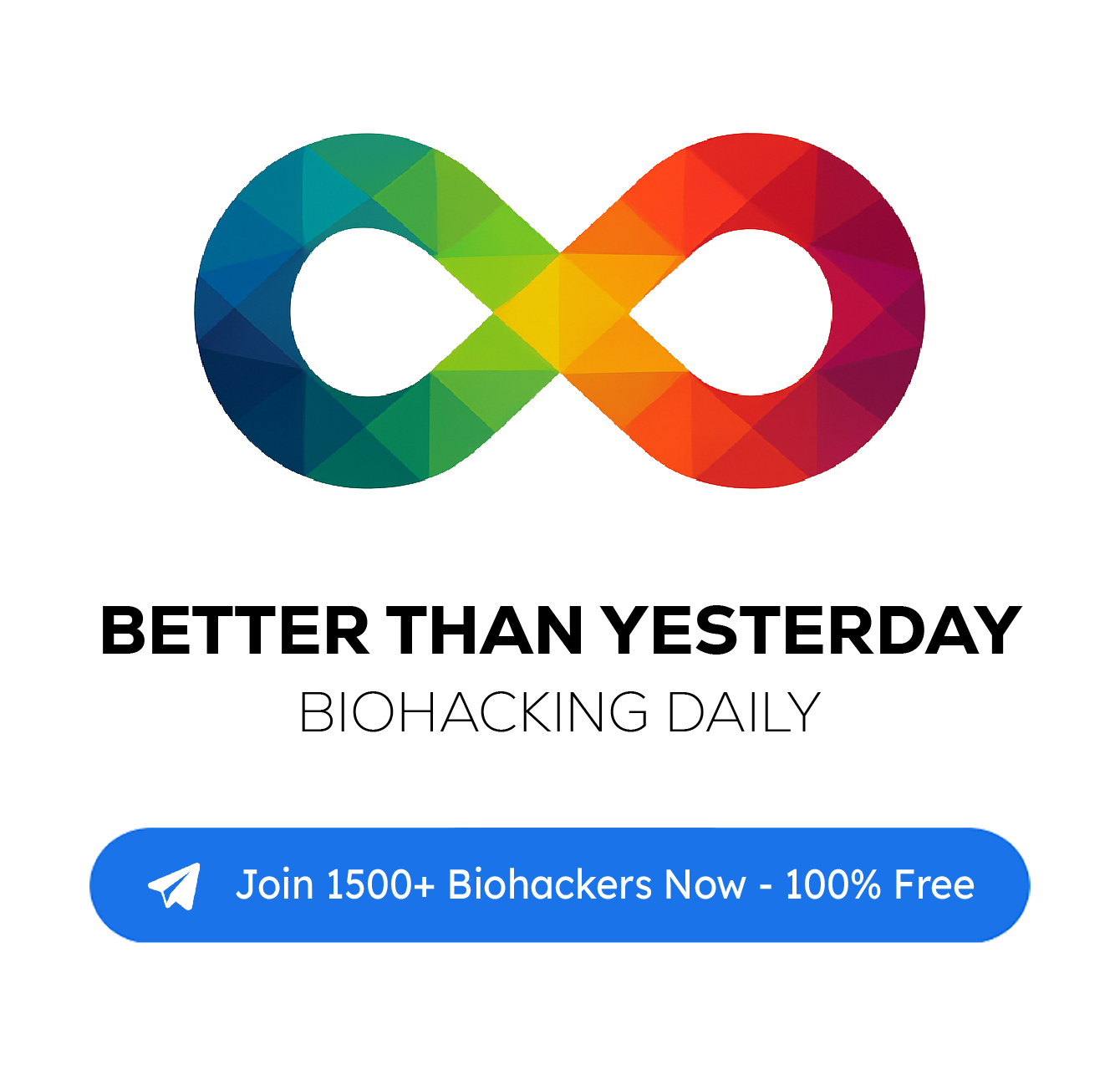❌ False Friends in Biohacking: 5 “Smart” Habits That Might Be Holding You Back
They look healthy. They sound smart. But they might be doing more harm than good.
Some biohacks look smart.
They show up in fancy videos, come with cool gadgets, and get shared in long Twitter threads full of scientific-sounding words.
But not everything labeled “biohacking” is helpful. In fact, some popular habits can actually stall your progress, stress your system, or waste your time and money.
We call these the false friends of biohacking.
Today I’m breaking down 5 of the most common ones I see everywhere — and what to do instead.
❌ The Giant Supplement Stack
What people think:
“If I take everything — vitamin C, zinc, D3, ashwagandha, NMN, B12, lion’s mane, fish oil, magnesium — I’ll cover all bases and feel amazing.”
Reality check:
Your body can only absorb so much at once. A lot of it ends up in your urine. Some of it builds up in your liver. Certain vitamins (like A, D, E, K) are fat-soluble — meaning they store in your body, not flush out. Take too much, and you can create imbalance or even toxicity.
The other issue? Timing and synergy. Some supplements block each other. Some need food. Others need fats. Taking 10–20 pills at once is like throwing spaghetti at the wall.
What to do instead:
Start with only what your body needs. Most people benefit from omega-3, magnesium glycinate, and vitamin D if levels are low. Add one thing at a time, track how you feel, and test bloodwork if possible.
Smart biohacking isn’t about more stuff. It’s about what actually works for you.
❌ Tracking Everything, All the Time
What people think:
“I’ll optimize my health by watching every metric: HRV, sleep stages, glucose, ketones, resting heart rate, skin temp, stress score…”
Reality check:
You’re not a robot. Tracking is useful — until it’s not. Most beginners fall into the trap of data overload. It feels productive, but it creates stress and confusion. You wake up, see your “Readiness Score” is 62, and suddenly feel tired… even if you slept 8 hours.
Biohacking isn't just measuring stuff. It’s acting on it. If you track but don’t change, it’s just stress with a dashboard.
What to do instead:
Choose 1–2 markers max based on your goal. Want better recovery? Watch HRV. Want fat loss? Use a basic food log. Want better sleep? Just track bedtime and wake time.
Keep it simple. Use the data. Then take breaks.
❌ Copy-Pasting Someone Else’s Routine
What people think:
“This YouTuber does a 4 a.m. cold plunge, breathwork, keto coffee with 6 powders, fasts till 2 p.m., trains twice, meditates, takes NAD... I’ll do that too.”
Reality check:
You don’t live their life. You don’t have their genetics. You probably don’t have their chef or 3-hour time blocks either.
This is one of the most common beginner biohacking mistakes. Thinking there’s a magic protocol that works for everyone. But your biology, sleep, stress, and schedule are yours alone.
What to do instead:
Start with your lifestyle. Your constraints. Your goals.
Maybe you sleep with a toddler in your bed. Maybe you work late. That’s real life.
Biohacking is personal. It’s not a template. Steal ideas, sure — but test them in your world. Keep what fits. Drop the rest.
❌ Buying Fancy Gadgets Before Fixing the Basics
What people think:
“If I get the red light panel, the brain-zapping headband, the EMF blocker, and the collagen blender... I’ll be optimized.”
Reality check:
If you sleep 5 hours and eat garbage, no gadget is going to fix that.
This is the classic longevity trap: trying to tech your way out of poor habits. It's fun to experiment, but it distracts from what really works.
You end up with $2000 of tools, no results, and a drawer full of regret.
What to do instead:
Nail the fundamentals:
✅ 7–9 hours of sleep
✅ 10k steps or more daily
✅ Protein in every meal
✅ Real food, not processed junk
✅ Sunlight in the morning
✅ Strength training 2–4 times a week
Then, add tools if you want. But tech is the cherry, not the cake.
❌ Thinking “Natural” Means Safe
What people think:
“I don’t take meds. I take herbs. They’re natural. So they’re better.”
Reality check:
Some “natural” herbs and detox products are anything but safe. Kava, comfrey, and certain “liver flush” mixes can be toxic. Others interact with medication. Some stress your liver more than they help.
We often forget: arsenic is natural. So is poison ivy. “Natural” just means it came from a plant — not that it’s good for you.
What to do instead:
Use herbs with a purpose, not just vibes. Look for products tested in humans, not just on rats. And always check how they interact with other stuff you take — even food.
Less is more. Simpler is better.
💡 Final Thought: Biohacking Should Make You Feel Better
If your “health routine” leaves you tired, anxious, or broke… it’s not helping.
You don’t need to be perfect. You don’t need all the gadgets. You don’t need to take 12 things before coffee.
You need to feel good. Move better. Age slower. Sleep deeper.
That’s real biohacking.
✅ Follow Better Than Yesterday for smart tips that make sense, feel good, and fit real life. No extremes. Just progress.
Let’s build better habits — one at a time.



